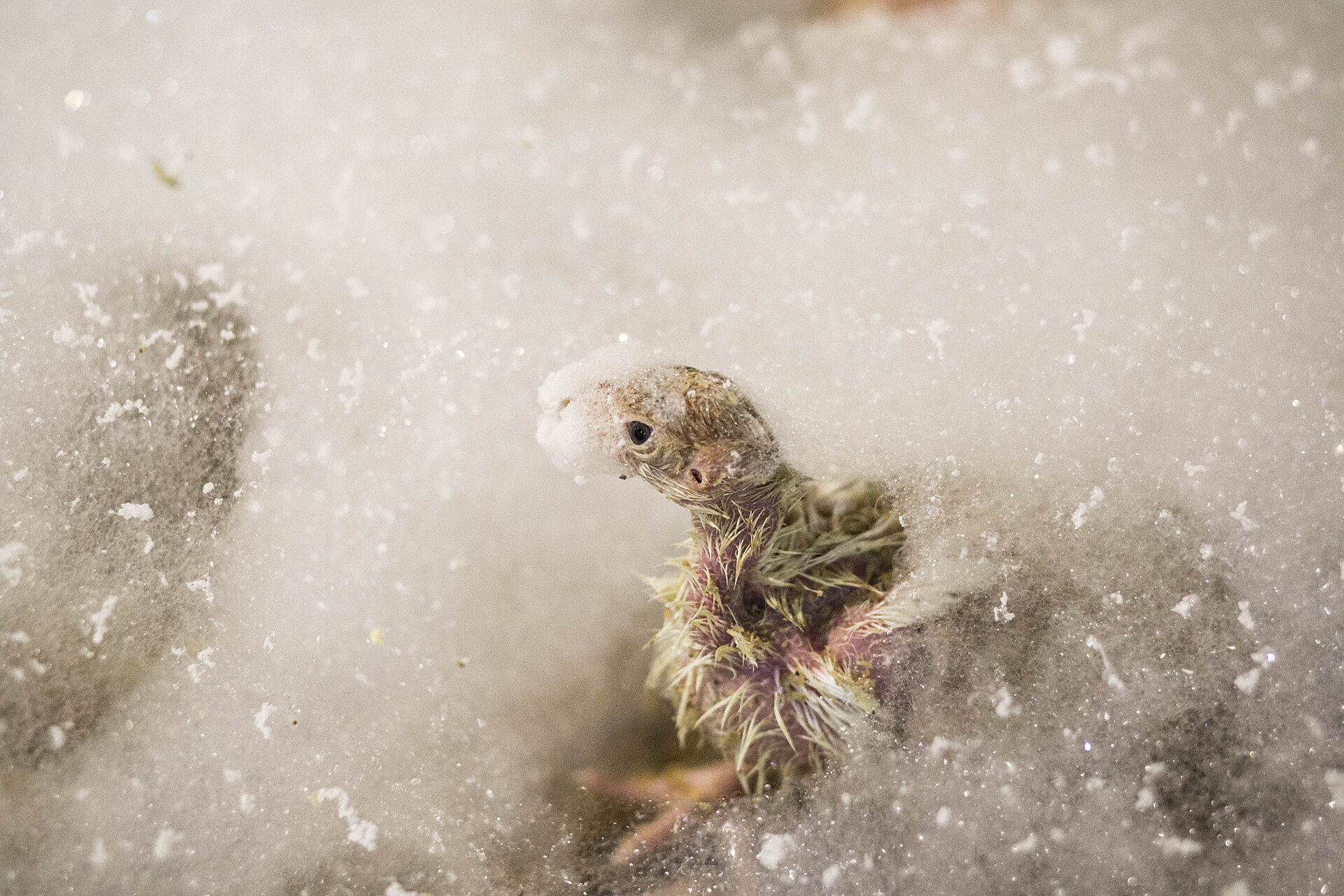For more than two years, the US poultry industry has been battling a highly virulent strain of avian influenza, or bird flu. The virus has driven up egg and turkey prices and crossed over from infecting just birds to numerous mammalian species, including sea lions, mice, cats, dairy cows, and, increasingly, humans.
And it shows no signs of stopping — only reaching new milestones.
The first milestone reached this month concerns the birds themselves. Last week, a Weld County, Colorado, farm that housed 1.3 million egg-laying hens detected bird flu and, per federal policy, was forced to kill the whole flock in an effort to slow the spread of the virus. Those 1.3 million dead birds tipped the total number of chickens and turkeys killed during this outbreak to over 100 million — double the total from the previous outbreak in 2014 and 2015.
The second milestone concerns us humans. Earlier in July, bird flu was detected on an even bigger farm — housing 1.78 million hens — in the same Colorado county as the first farm. A crew of some 150 workers were deployed to kill the hens. They were given goggles and masks for protection, but the 104-degree heat combined with strong industrial fans in the barns made it difficult for the gear to work effectively.
Six workers contracted the virus, which made it the single most infectious bird flu event for humans in US history, more than doubling the number of Americans who had contracted the virus since April 2022.
Workers remove their biohazard suits after culling ducks at a farm in Ontario, Canada, in 2022.Jo-Anne McArthur/We Animals Media
Around half of the nearly 900 people who’ve fallen ill to H5N1 globally since the early 2000s have died, though the variant circulating during this outbreak has proven quite mild in humans. Patients in Colorado and elsewhere have reported pink eye, fever, and coughing, and the Centers for Disease Control maintains that the risk to the American public remains low. I spoke with four bird flu experts who generally agree with that risk assessment, but with some important caveats, which brings us to the third milestone.
Some of those experts said that, based on genetic sequencing from one of the sickened farmworkers, the strain of the virus that infected all those hens and workers is related to a strain that’s been circulating in cows. That means the strain is more infectious for other mammals — like humans — than a normal poultry H5N1 virus.
“I don’t think it is a coincidence that several people were infected with this version of the virus, which has adapted to cows,” said Philip Meade, a microbiologist at Mount Sinai Health System.
This doesn’t mean a bird flu pandemic is on the horizon. For that to happen, the virus would have to evolve in such a way that it effectively transmits from human to human and causes more severe symptoms, which may never happen. But that’s the bedeviling nature of bird flu — it’s highly unpredictable. Tom Peacock, a virologist fellow at the Pirbright Institute, which researches livestock diseases, said the risk level remains low “until it suddenly isn’t,” in the event that the virus adapts to transmit between people. That it’s circulating among cows increases the possibility that it could occur.
Is bird flu here to stay?
That the virus has been spreading in the US for over two years also raises the question as to whether it’s endemic, meaning it circulates year-round.
Experts told me it’s highly likely that it’s already endemic in wild birds, the original reservoir for the virus, who spread it to poultry farms in the spring and fall during migration. In Europe, which has experienced a steep decline in bird flu outbreaks on poultry farms this year, wild birds seem to have gained some immunity from the virus, which could happen here too.
But the persistence of H5N1 in the US during the summer months suggests that a “decent proportion” of recent poultry outbreaks, according to Peacock, seem to be caused by the cattle strain, which he described as a major change.
“The concern here is that the virus can maintain a transmission cycle involving cattle — which don’t usually die or sometimes even develop noticeable symptoms from bird flu — creating a reservoir from which the virus could mutate unfavorably or cause human outbreaks,” said Brady Page, an infectious disease research fellow at the Scripps Research Institute.
In short, we could be entering some kind of bird flu doom loop, in which it has multiple reservoirs to infect farmed birds, and can more readily adapt to infect mammals.
That the threat level is on the rise is also a damning indictment of the US Department of Agriculture’s sclerotic response to the virus, which has drawn sharp criticism from the infectious disease research community.
Bird flu first began to infect dairy cows late last year, but it wasn’t detected until late March. The USDA then took several weeks to upload critical data about the virus. It also didn’t mandate routine testing of dairy cows, and farms with positive H5N1 tests weren’t required to report them — a move that hamstrung scientists’ efforts to track and prevent the spread. It took a month for the agency to at least require testing before cows crossed state lines, and there’s no proactive effort to test large numbers of farm workers.
The response is in line with the USDA’s deferential relationship to industry and explains in part how we got here. The USDA has resisted calls to vaccinate poultry birds because it would disrupt trade agreements, and thus the industry’s bottom line. The USDA also helped build the modern factory farming system, which provides the perfect conditions for viruses to spread: hundreds to thousands of weak, genetically identical animals packed together in unsanitary barns.
A young turkey on a farm in Israel is sprayed with firefighting foam to kill the flock during a 2016 bird flu outbreak in the country.Roee Shpernik/Glass Walls/We Animals Media
“We should treat potential pandemic threats like this virus with the same seriousness that we apply to our national defense,” said Meade, the Mount Sinai researcher.
If we don’t, we’ll have a harder time breaking out of the bird flu doom loop. Without a vigorous response to contain the virus — and sober reflections on the pandemic risk posed by America’s meat industry — we’re likely to see more and more farmed birds dying horrible deaths, more sickened cows, higher food prices, and an increased threat that we spark the next pandemic.
This story originally appeared in Today, Explained, Vox’s flagship daily newsletter. Sign up here for future editions.













![ROSE IN DA HOUSE I BE MY BOYFRIENDS 2 [OFFICIAL TRAILER]](https://cherumbu.com/wp-content/uploads/2022/01/ROSE-IN-DA-HOUSE-I-BE-MY-BOYFRIENDS-2-OFFICIAL-150x150.jpg)

